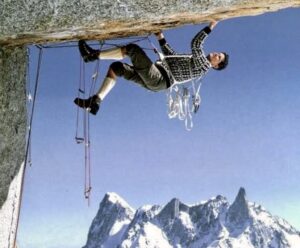Renowned ultra-runner Kilian Jornet has had quite a year. In May he set a new world record for the fastest known alpine style ascent of Everest, using no oxygen or fixed ropes in the process, and summiting via the North Face in just 26 hours.
Then
in July, presumably while still picking icicles out of his hair,
he won his fourth straight Hardrock 100, a 100.5 mile endurance race through the Rockies, despite dislocating his shoulder on mile 14.
The Everest ascent forms part of his ongoing “Summits of My Life” project, a quest to set new speed records for major peaks. Over on the Uphill Athlete website, Kilian has opened up his training techniques and about his preparations for both the Everest and Cho Oyo ascent alongside Emelie Forsberg.
The use of hypoxic tents is a hot topic within the climbing community. Now even luxury tour companies are offering them as part of packages intended to entice new clients to scale Everest in a shorter and shorter amount of time. Kilian’s use of a hypoxic tent for one month prior to his departure, simulating an altitude of 4,000m to begin with and slowly building to 5,800m by the end of the 4 weeks, represents a fantastic opportunity to hear from a respected voice on his experiences using the technology. While he believes it does help with shorter trips he cautions that “climbers without a big ability to recover well from hard training will probably not have the same results with the same approach.” Physical fitness is clearly still a vital component in order to use the tents effectively and to remain safe once in the mountains.
Kilian suggests that a yearly training schedule of between 700 to 1200 hours is needed in order to ensure your body is ready and can recover quickly. Therefore, as well as spending 240 hours in the simulated altitude of the tent he also spent 60 hours training at real altitude in the Alps.
Once preparations at home were complete it was important to travel to the Himalayas as quickly as possible and to spend as little time as possible at extreme altitude. Kilian’s key points once on the mountain were as follows:
– To sleep as low as possible
– Move at low speeds so as not to fatigue your cardiovascular system (except for when completing the actual ascents)
– Try to have at least 1 day of rest per day of activity
– Try not to have more than 2 full days of rest per day of activity
– Climb in a lightweight manner when at higher altitudes and always go all the way down on the same day.
In total Kilian spent 11 days on Cho Oyo with Emelie and a further 18 on Everest, but only went over 8,000m on 4 occasions, thus minimising the effects of extreme altitude on his body. Kilian summited Everest twice in this time, reporting that he suffered some stomach issues above 7,600m on the first (record breaking) ascent and some “small hallucinations” on his way down from the second. However the following day at Base Camp he felt “completely recovered” and had gained some valuable insight in that “it is possible to climb a high summit starting very low (almost 4,000m lower)” with his approach.
Returning home to Norway as quickly as possible, Kilian had resumed his normal 25 hour per week training within 4 days on summiting Everest and was competing in a half marathon not 2 weeks later. Kilian believes that his approach to preparation for this trip “means that the expedition does not have a bigger impact on the body than a normal month of training or racing.” A quite staggering feat.
The full article, including detailed timelines for both Cho Oyu and Everest, can be found on Uphill Athlete.
Previous:
Everest 2015: Interesting Expeditions of the Season
Kilian Jornet on Uphill Athlete





